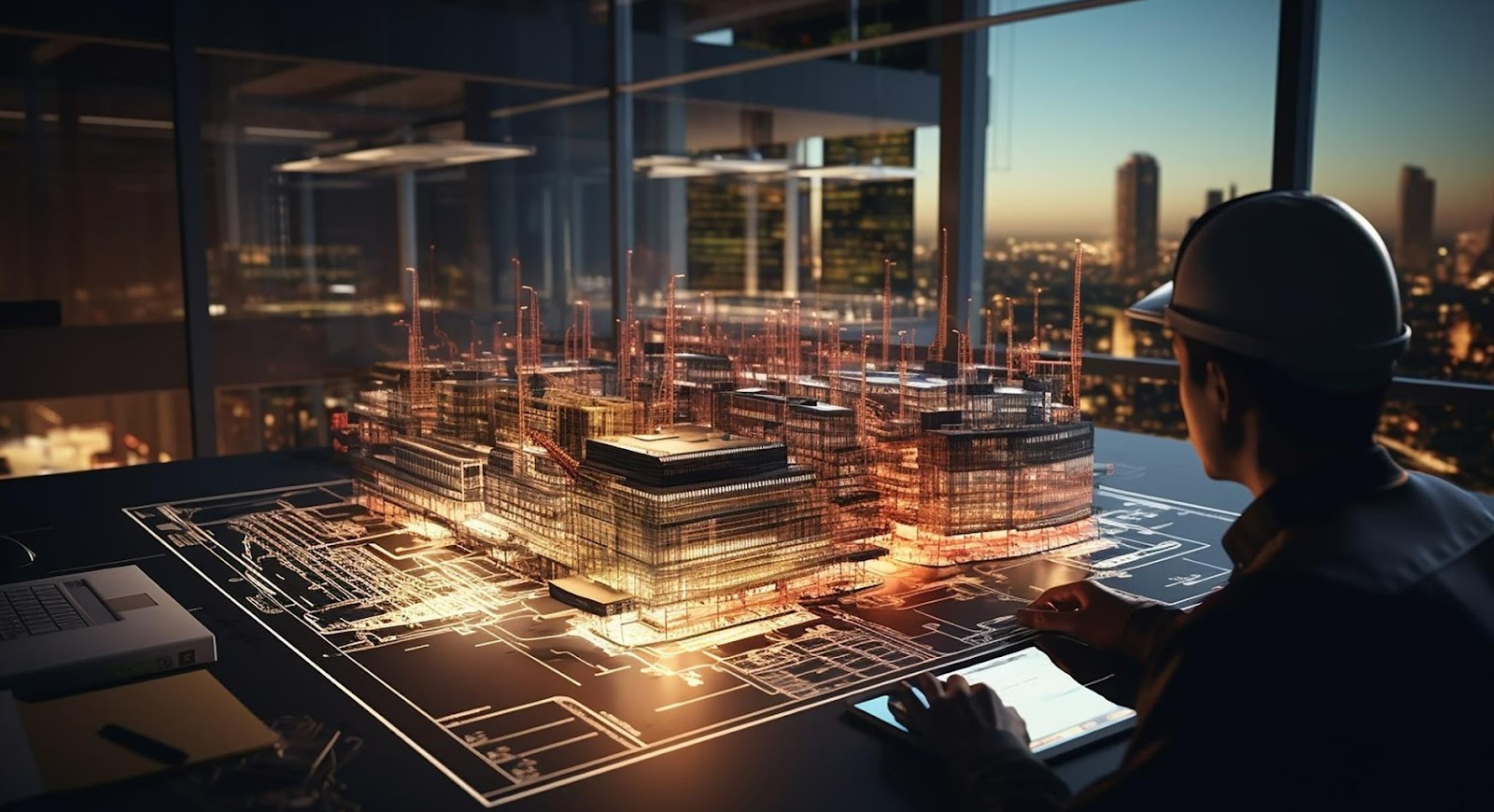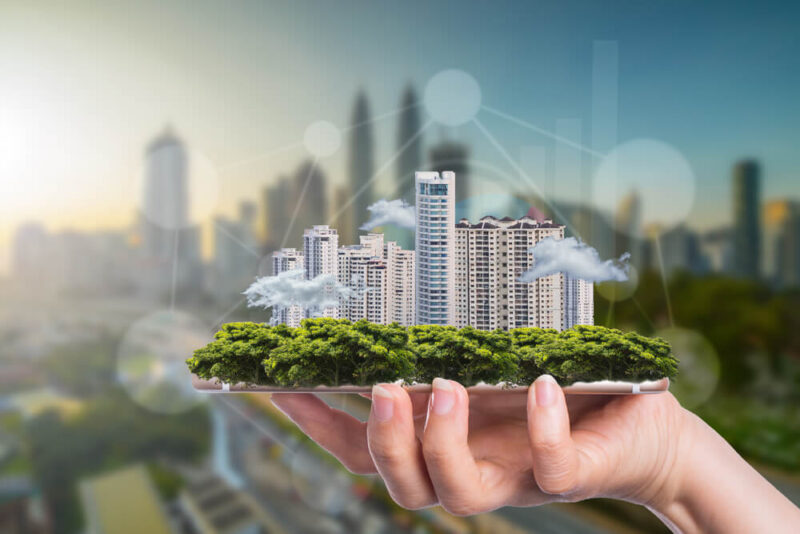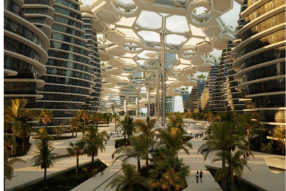Building Information Modeling (BIM) is the process of creating and managing digital models of physical and social features of built environment forms. BIM is revolutionizing the architecture, engineering and construction businesses in various parts of the globe. By integrating the various stakeholders, it ensures that project workflows are efficient and correctly done. Dubai has realized that BIM can be of immense benefits to the improvement of design, construction and management of buildings. The Dubai Municipality has therefore developed BIM requirements and best practices to inform the deployment of BIM on projects. The incorporation of a strategic BIM integration is crucial to realise benefits including quality, time and cost efficiency and optimal development of infrastructure for the built environment of Dubai.

What is BIM?
BIM is the acronym for Building Information Modeling. It is a procedure of developing an exact replica of a building or any structure using new technology.
Definition:
BIM is an undertaking of preparing a virtual three-dimensional model of infrastructure. The model includes data such as dimensionality, the materials implemented, and many more factors.
Components:
- 3D Model: Real-life broadcasts a picture of how the building will appear like at the end of the construction period. Assist in the planning of the particular layout and identify issues with it.
- Data: Model also contain information on the building components such as the walls of the building, windows, conditioning and the likes.
- Collaboration: Web based model allows people who are architects or builders to cooperate on the model.
Benefits to Dubai:
- Plan buildings better: To realize that’s there is a design challenge with the spot long before the construction actually begins.
- Build faster: It also shows how BIM enhances coordination. Let me elaborate on this, fewer mistakes equate to greater efficiency in construction.
- Manage buildings smartly: Well, BIM models can ensure with data that Dubai knows how to take proper care of buildings.
- Improve sustainability: Thus, BIM assists with the easy planning of green features whenever they are incorporated during the designing phase.
- Develop smarter: BIM is useful in attracting investors and making the city of Dubai the leader in becoming a smart city.
The Concept of Smart Cities
A smart city is an intelligent city that applies ICT to improve its performances and citizen’s lives. Smart cities gather data from instruments and sensors which are placed all across the communities in order to optimize the usage of resources and efficiency of services in a city.
Key technologies in smart cities:
- Internet of Things (IoT): Integration of physical items which incorporates electronics, software, and sensors to acquire and trade information.
- 5G/High-Speed Networking: The fixed broadband service with extremely high internet speed supporting IoT and real-time data processing.
- Cloud Computing: Efficient storage of data and the ability to supply computing resources through central-providing utilities over the World Wide Web.
- Analytics/AI: Softwares which helps analyze huge amount of data of urban areas to improve operations and manage the infrastructure.
Benefits for Dubai include:
- Enhanced utilisation of smart healthcare, education also smart citizen services that impact on the living standards of the people.
- Concerning resource sustainability, possibilities for implementing renewable energy into the building and efficient use of utilities.
- Smart transportation resources and traffic signals to cut down the movement of cars on the roads.
- Boosted economy through the development of investment instrument and consequent attracting of business entities, residents and investors to the innovative urban environment.
- Optimised protective and adaptive designs, functions and living conditions through technology connectivity and digitalisation.
Dubai's Vision for Smart Cities

The United Arab Emirates and Dubai in particular has a very ambitious plan of becoming one of the best smart cities globally. The emirate is seeking to become a smart sustainable urban area embellished with advanced technologies. The overall rationale is to increase the quality of life within the districts by linking infrastructure and providing data services. They will focus on the integration of smart transport system, sustainable energy system, and adoption of an AI-based smart government to provide smart services to the public. There will also be global adoption of Broadband internet connectivity, IoT, Cloud, and analytics as the background technologies. This is also accomplished through the focus on attracting business talent and investments by showcasing Dubai as home to the latest advancements in urban morphology. This vision aims to:
Strategic Goals:
- Create physical interrelated network and electronically revolutionized one stop government services.
- Sustainable community and enhanced methods of living shall be achieved through the Internet of Things.
- Develop itself into the center for future technologies and turn into a catalyst for economic growth possibilities.
Key Smart City Projects:
- Smart Dubai 2021 practice to turn into the happiest city all over by using AI services.
- Became the first to create the 3D printed office and revealed the intentions to develop 3D printed communities.
- Self-driving metro and pod cars to enable efficient self-driven public transport service.
- Described and installed Smart Police Stations, and Smart Parks filled with sensors, connected devices and analytics.
Innovations Driving Transformation:
- Integration of drone taxis, delivery robots and self-driving cars on the roads by 2030.
- Drive for large scale utilization of renewable energy from solar and green hydrogen initiatives.
- Ensure Dubai to become incubator hub of new technologies such as extended reality, robotics, etc.
- The vision lays down Dubai as the leader making smart living at economic and environment feasible.
The Role of BIM in Dubai's Smart City Development
The use of BIM is successively used in Dubai’s vision to transform the city to a smart city with connections to an intelligent infrastructure. BIM primarily refers to the production of smart 3D models of the built environment and structures which are capable of communicating with other smart systems. Such intricate virtual models are the underpinning of the internet of things because they provide the means for mounting sensors and supporting the monitoring systems. Some of the project that have demonstrated the possibilities of BIM are the first generation of the Dubai Metro and the Sustainable City where it is used in planning for sustainable utilities. Hence, ensuring the interoperability of spatial data, BIM allows for applications as varied as augmented reality and analytics for efficient operations. This places it at the center of Dubai’s overall plans for constructing the smart city of the future urban setting.
Integration with smart technologies
Integrated building information modeling works as the base system to support other smart technologies that are used to set the foundations of the smart city of Dubai. When such a form as BIM contains digital representations of physically located assets containing massive amounts of metadati, this way convenient interaction with other technologies is ensured. This makes it possible to apply the technology at the various stages of the infrastructure and building life cycle right from the planning phase and the operational phase.
Some ways in which BIM supports integration include:
- The real-time monitoring and control of the building possibilities due to the application of the IoT sensors inside the 3D models with the help of the ‘digital twins’ insights.
- The use of open standards such as IFC in handling spatial data ensures the adoption of AR; VR and computer vision in utilities, transportation, and public service.
- FM ties with BIM to acknowledge maintenance jobs with the assistance of sensor data from analytics.
- Integrating GIS systems for superimposing utility networks, zoning and land-use for better master planning through common GIS data.
- Data integration to BIM repositories for the use of AI & analytics to optimize asset use and improve decision making among others.
This integration of BIM and smart technologies enhances the efficient processes of turning Dubai into a technologically smart city.
Case Studies
A number of large-scale projects is recognized in Dubai to illustrate how BIM can contributes to smart city agenda of the emirate. BIM has provided the solution by applying collaborative 3D modelling and open data standards in order to deliver new infrastructures.
Some notable case studies include:
- Even with regard to the now-scaled down original Dubai Metro project, BIM was used to a significant degree to facilitate design coordination of 90km elevated/underground network, and predictive maintenance via integration of sensor data.
- Dubai Municipality’s Sustainable City district used BIM in how it envisioned a district with disposable energy in solar panels and smart renewable systems and district-scale reticulated wastewater treatment plant.
- The company applies BIM to control and update their facilities for smart features such as energy and water efficiency with the application of the digital twin.
- Most critical facilities are served by Dewa through a BIM system linked to IoT sensors that allow remote monitoring and real-time prediction of system problems.
Key Benefits
Some of the benefits are the best usage of assets by running simulations to prepare for disasters, using data for administrative tasks, and getting innovation through demonstrative projects. In conclusion the role of BIM is therefore significant in achieving efficiencies on the merging between the physical and digital cities of Dubai.
Challenges and Solutions
Challenges in establishing BIM's role include:
- As smart systems move up the scale there is a need addressing the challenge of data interoperability this happens as the result of standards based open platforms.
- According to the opinions, correcting the division of departments, lack of integration of different government agencies.
- The upgrade of existing/legacy assets and systems that were not contemplated with integrated digital twins in mind
- Dealing with issues arising from growth constraint such as on structures, material and skilled personnel
Potential solutions being adopted:
- Explaining enforcement of Open Standards and implementation of data repository points
- Strategies that enhance inter disciplinary collaboration of the stakeholders in the planning process
- Demonstration projects as concerns retrofit techniques and payback for current stock
- Efficient techniques on engaging with academia to create smart city specific educational programs that will upskill mid-professionals and train new talents.
- Creating an environment for the private sector through regulation and innovation contests
- Test-bed and live lab creation to experiment with revolutionary concepts prior to mass enterprise implementation
Considering the emphasis on the standards, collaboration and skills, Dubai can successfully apply BIM to the challenges of smart transformation of built environment.
Importance of Training
In Dubai the most important profession to be trained in BIM is training professionals so that the city can achieve it’s goal of providing a digital built environment. Bachelor level Revit BIM courses are rather important since Revit is the most commonly used enterprise software for architectural and MEP modeling. The best leading training center, for instance, Orbit provides intensive practical training in Revit BIM. Subject-specific programs offered include MEP/structural coordination basic and advanced; Codes and standards compliance; Automated 5D cost planning and others. In this context, thorough Revit education for the workforce allows Dubai to build smart infrastructure with the help of the newest technology; these approaches are essential for the sufficient development of smart city ideas.
Future Prospects
All of this leads to the proposition that the further development of BIM can be used to shape the modernification of Dubai to become smart cities of the future. As technologies continue advancing, BIM provides the platform to:As technologies continue advancing, BIM provides the platform to:
- Integrate IoT at a large amount with BIM digital twins for the futurology of cities to be considered as “living beings.”
- Initial application of augmented and/or virtual interfaces in realistic design review, remote asset tracking, and realistic skills training.
- Utilize big data tools to incorporate information collected from the building lifecycle to automatically make decisions in procedures and planning.
- Introduce BIM at district level for deriving utility-scale solutions for infrastructure and total master planning of a city.
Dubai continues to demonstrate its determination to pilot innovations and therefore construction disruptors such as robotics and generative design will also be piloted. It can therefore complementarily shape sustainably the emirate’s status as a pioneering smart city if proactively enhanced.
Conclusion
As a consequence, Building Information Modeling is all set to serve as the driving force that would shape Dubai’s future by making it a smart, sustainable, and ready-for-the-future city. in helping to anchor infrastructure solutions, BIM is a platform on which other directions of smart technologies from IoT to AI can fit seamlessly. Its jointly authored 3D environments enable prospection, designing and managing of next generation solutions and service offerings. Past examples show the great results that can be achieved using BIM technology while future opportunities look boundless. Only if Dubai will continue to work proactive on behalf of its vision to become a role model of BIM-enhanced smart living on a large scale BIM will emerge as a valuable concept that can be advanced through policies, standards and skills development.

